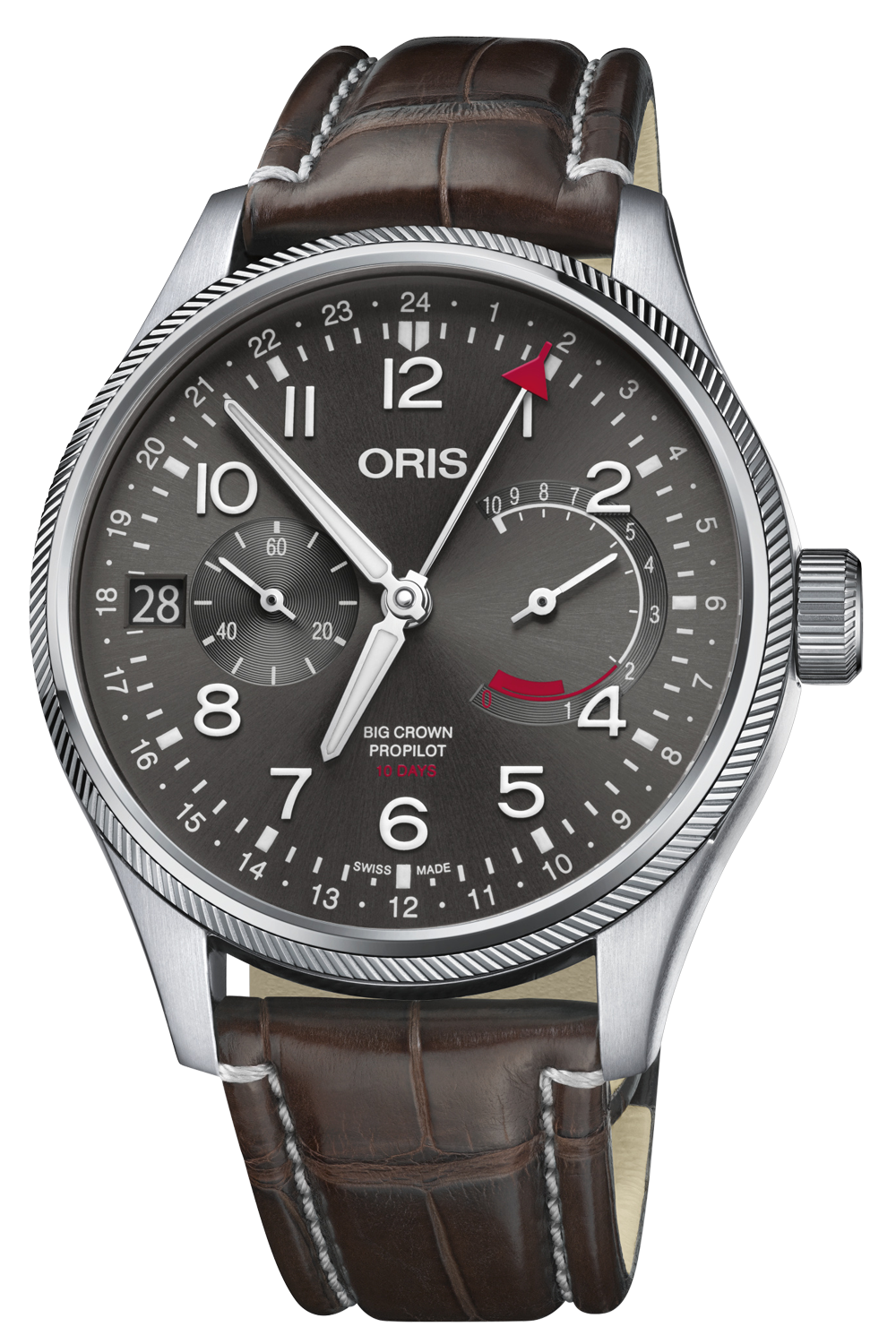TAG Heuer is proud to present the carefully curated Museum in Motion exhibition, which highlights heritage timepieces from our museum at La Chaux-de-Fonds, Switzerland and collectors’ personal collections.
The pieces selected showcase TAG Heuer’s rich history, particularly in motor sport racing, and highlight the brand’s innovative craftsmanship in luxury sports watch design. Key timepieces includes the 1963 Heuer Carrera, 1968 Heuer Camaro and 1969 Heuer Autavia, which gave inspiration to the modern collections that we have now.
Museum in Motion offers consumers and watch enthusiasts alike the opportunity to see unique vintage watches and experience the innovative world of TAG Heuer like never before.
The TAG Heuer Museum In Motion Manila will run from December 18th up until December 31st at the TAG Heuer boutique, SM Mall of Asia.
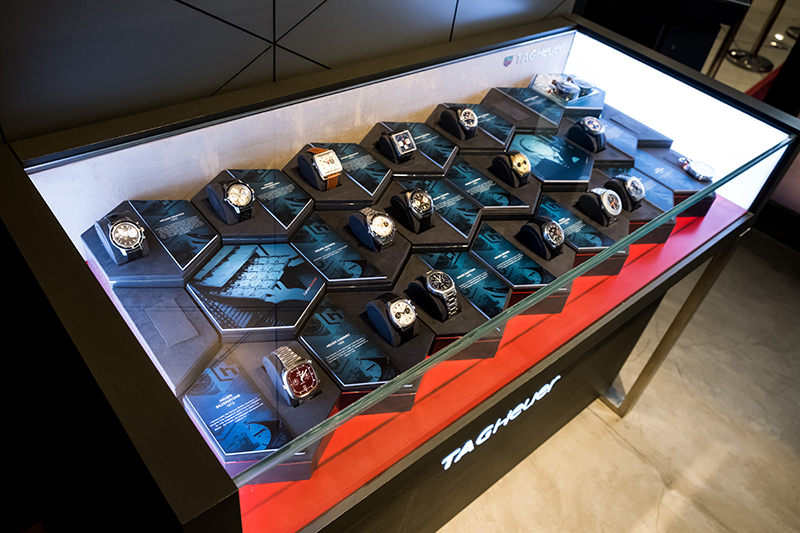

HEUER CARRERA
1963
The iconic Heuer Carrera has been designed by Jack Heuer in 1963. It was the first sports chronograph made specifically for drivers and sports enthusiasts. Designed with a wide-open and easy to read dialand a shock-resistant case. Manual winding chronograph equipped with a calibre Valjoux 72.

HEUER CARRERA
1972
Self winding chronograph equipped by calibre 15

HEUER MONACO
1972
Manual winding chronograph equipped with Valjoux 7736

HEUER MONACO
1972
The Monaco was revolutionnary for being the first self-winding automatic chronograph movement -calibre11- with a microrotor as well as the first square cased chronograph. It became an icon on the wrist of Hollywood super star, Steve McQueen, in the movie Le Mans (1971). Ref 1533 – Automatic chronograph equipped with calibre 15
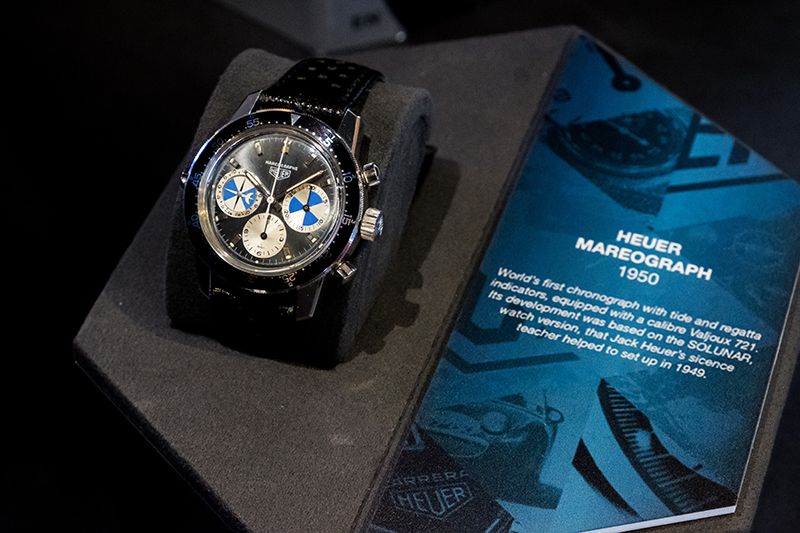
HEUER MAREOGRAPH
1950
World’s first chronograph with tide and regatta indicators, equipped with a calibre Valjoux 721. Its development was based on the SOLUNAR, watch version, that Jack Heuer’s sicence teacher helped to set up in 1949.
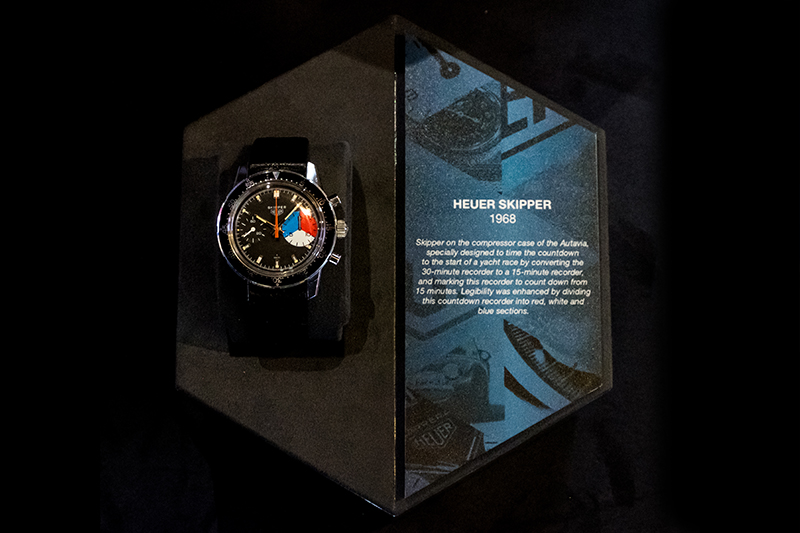
HEUER SKIPPER
1968
Skipper on the compressor case of the Autavia, specially designed to time the countdown to the start of a yacht race by converting the 30-minute recorder to a 15-minute recorder, and marking this recorder to count down from 15 minutes. Legibility was enhanced by dividing this countdown recorder into red, white and blue sections.
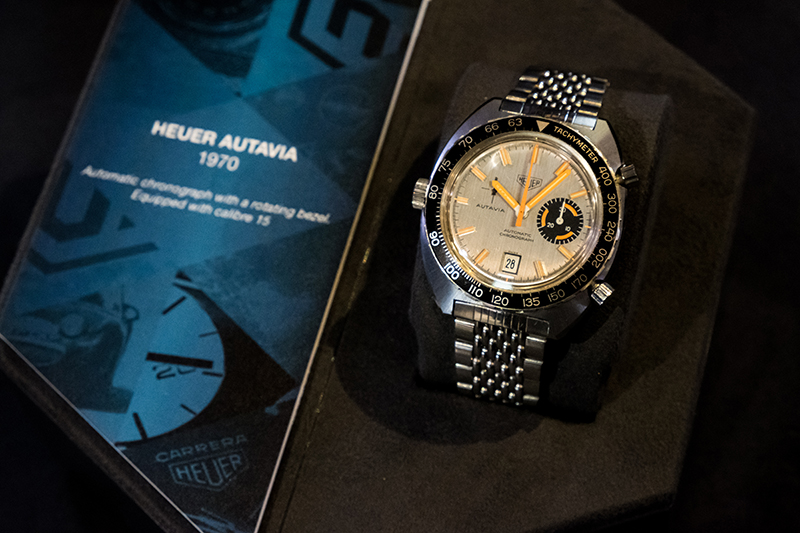
HEUER AUTAVIA (CAL 15)
1970
Automatic chronograph with a rotating bezel. Equipped with calibre 15

HEUER AUTAVIA
1969
Known as “The Siffert”, with its blue accents, in memory of Jo Siffert famous Swiss driver and Heuer ambassador. Automatic chronograph with a rotating bezel.
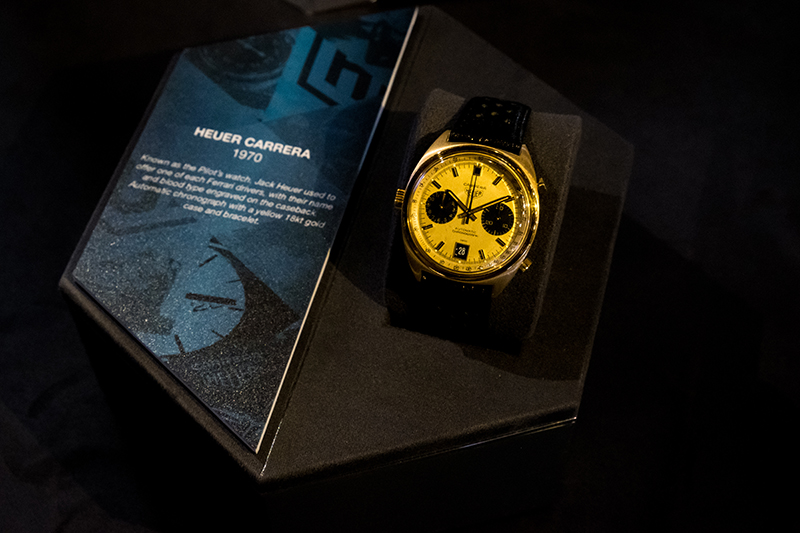
HEUER CARRERA
1970
Known as the Pilot’s watch. JackHeuer used to offer one of each Ferrari drivers, with their name and blood type engraved on the caseback. Automatic chronograph with a yellow 18kt gold case and bracelet.
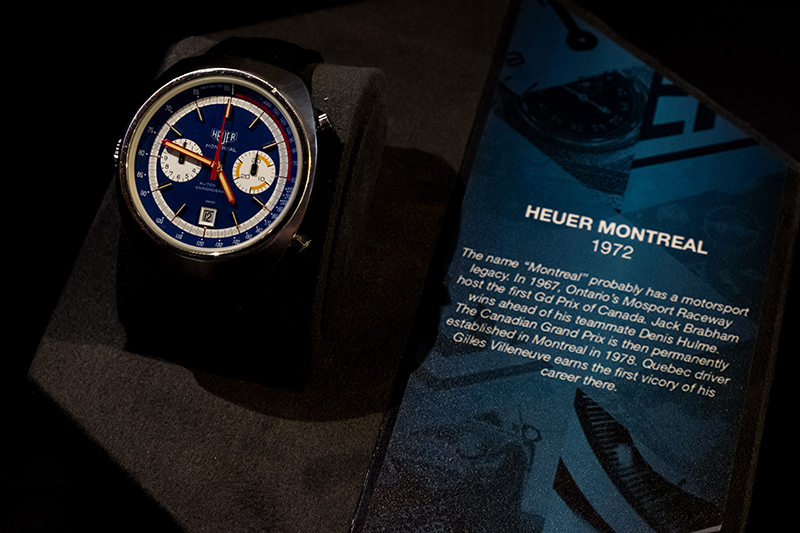
HEUER MONTREAL
1985
The name “Montreal” probably has a motorsport legacy. In 1967, Ontario’s Mosport Raceway host the first Gd Prix of Canada. Jack Brabham wins ahead of his teammate Denis Hulme. The Canadian Grand Prix is then permanently established in Montreal in 1978. Quebec driver Gilles Villeneuve earns the first victory of his career there.
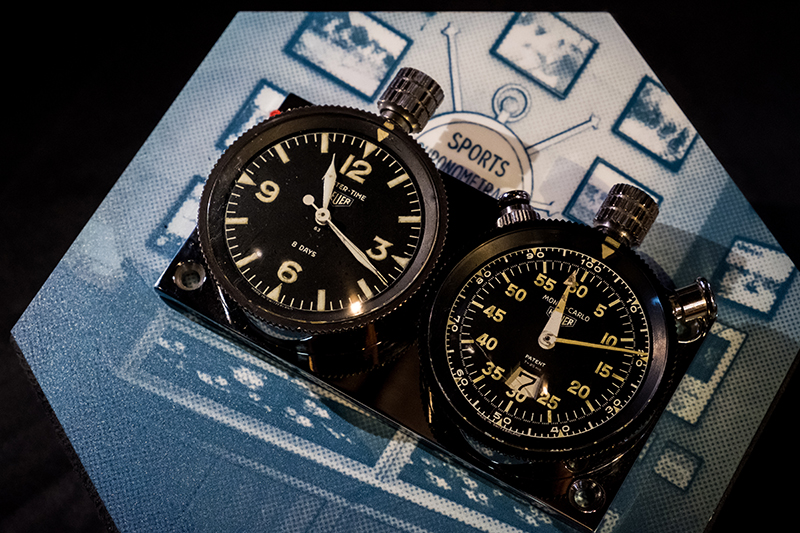
HEUER DASHBOARD
1960
Set of dashboard timer “Rallye Master” for cars, one clock with an 8-day power reserve and one chronograph
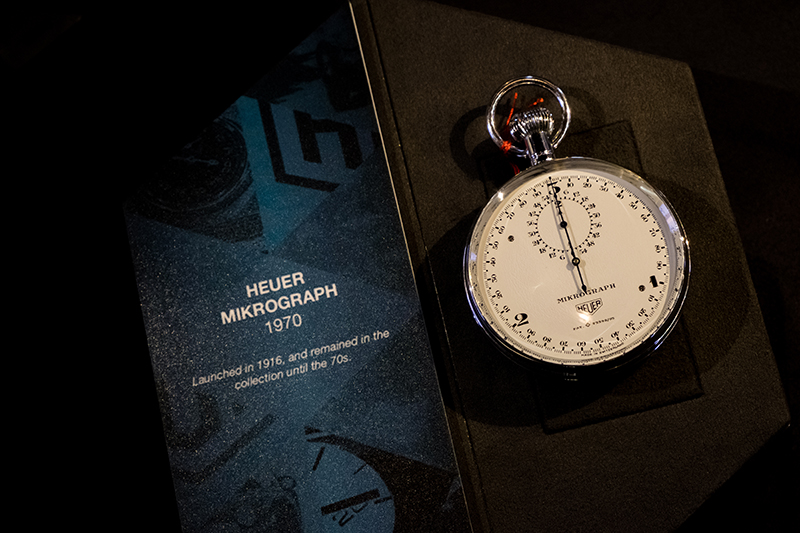
HEUER MIKROGRAPH
1970
Launched in 1916, and remained in the collection until the 70s.

HEUER CORTINA
1983
Cortina chronograph was launched in 1977, as a very elegant timepiece equipped with a calibre 12. It had an integrated bracelet. The name comes from the Italian ski resort. This latest version of the model is from the early 80s.
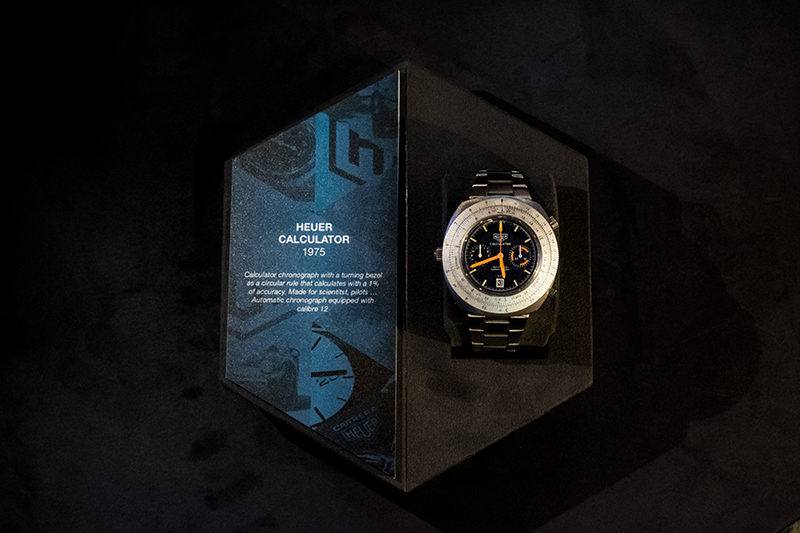
HEUER CALCULATOR
1975
Calculator chronograph with a turning bezel as a circular rule that calculates with a 1% of accuracy. Made for scientist, pilots … Automatic chronograph equipped with calibre 12

HEUER MONZA
1978
Launched for Niki Lauda Formula 1 world champion title with Ferrari in 1975. Automatic chronograph equipped with calibre 15.
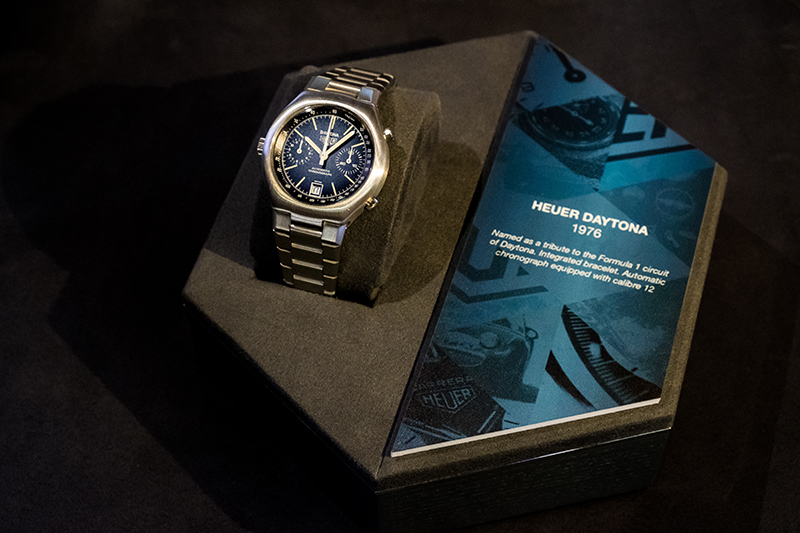
HEUER DAYTONA
1976
Named as a tribute to the Formula 1 circuit of Daytona. Integrated bracelet. Automatic chronograph equipped with calibre 12
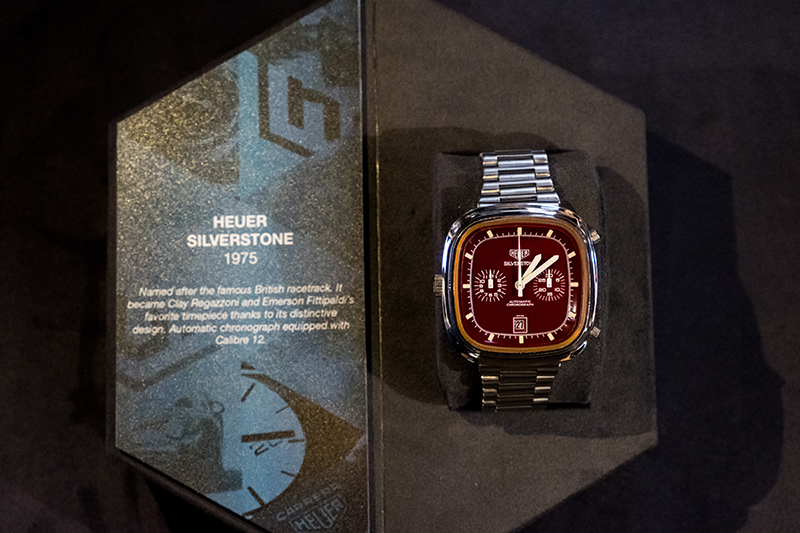
HEUER SILVERSTONE
1975
Named after the famous British racetrack. It became Clay Regazzoni and Emerson Fittipaldi’s favorite timepiece thanks to its distinctive design. Automatic chronograph equipped with Calibre 12.

HEUER CAMARO
1968
The Camaro is the forerunner of the Monaco. It was first launched in 1968 with a movement accurate to 1/5th of a second. Equipped with a Valjoux 7732.




